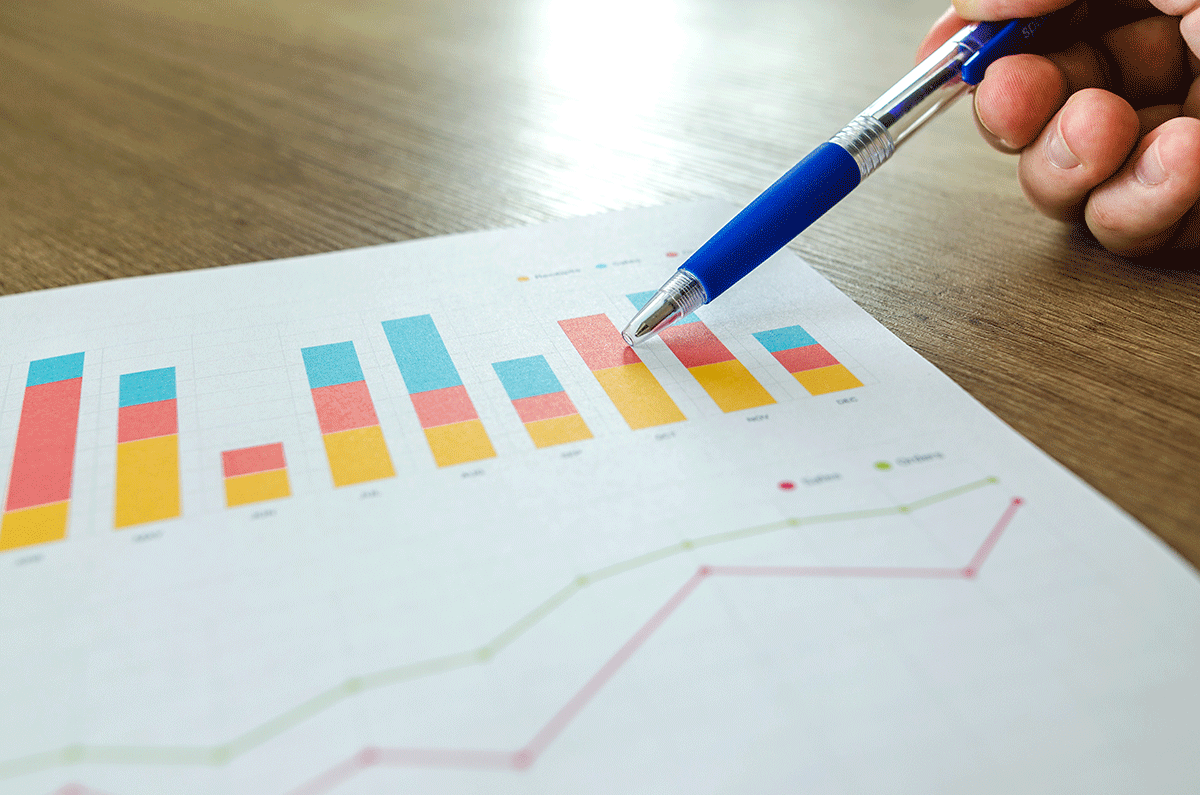Imagine a learning environment in which schools and organizations could personalize your experience. If you demonstrate proficiency in one area of a course, for example, you would be directed to the appropriate next step in the learning process. Or, if the course detects that you’re struggling with a topic or concept, it might provide you with additional opportunities to strengthen your knowledge and skills, or introduce you to an alternative way of learning the material.
This is one application of personalized learning—or instruction that offers pedagogy, curriculum, and learning environments to meet the individual needs of a student. It’s also just one example of the profound impact that learning analytics is having on education, all thanks to the accessibility and understanding of big data.
Big data isn’t new: Organizations have used it for decades and currently create more than 2.5 quintillion bytes of data every day. But while other industries have been quicker to make data-driven decisions based on analytics, education has not yet capitalized on the insights and benefits big data can provide, says Michael Dean, assistant professor and concentration lead for Northeastern University’s Graduate Certificate in Learning Analytics program.
Download Our Free Guide to Advancing in Higher Education
Learn more about how you can change the course of higher education—from the skills you need to the different roles available.
“Education hasn’t had the historical use of big data that the business world has, but we’re also looking at the data differently,” he says. “Businesses often use this data to affect their bottom line and maximize profit. While we want to attract students and promote programs, the main goal of learning analytics is to improve teaching and learning.”
To do this, professionals need a background in educational statistics and quantitative methods, but also in big data and analytics—a new, emerging, and growing field that’s poised to reshape the future of the field.
Uncovering Big Data’s Potential
Educational institutions collect hundreds of thousands of data points every day from online assessments, learning management systems, and massive open online courses. They’re also reporting data to local, state, and national governments and education systems, and to students and their parents, teachers, and universities.
“The field of learning analytics is growing because of the access to all this data that we didn’t have before,” Dean says. In fact, according to a 2016 report, learning analytics will be one of the largest emerging fields in education.
All this data is useless unless institutions can unlock its potential. Universities, for example, might want to analyze data to detect patterns in student enrollment to improve a program’s success. When students drop out of a program, when does it occur? If it’s after a particular course, what changes could be made to improve student retention?
Universities might also want to analyze the gaps within a student’s background. If a student drops out of a course, is it because they’re missing a level of preparation necessary to succeed? If they are missing a historical qualification or course, the university might consider designing a one-credit refresher or piece of content to help them succeed, Dean says.
“This type of adaptive and personalized learning becomes much more realistic when you’re able to derive so much from student data,” he says. “All this information can inform decisions to help both students and institutions succeed.”
Higher education isn’t the only industry that can capitalize on learning analytics, however.
Secondary educators, for example, might collect data on student performance in a particular subject area, then determine the best predictors for student success and use analytics to employ strategies that improve student performance. Or, in school districts, administrators might want to analyze data on dropout rates in high school, then use that data to identify at-risk students.
Businesses and organizations are also learning communities and can benefit from professionals with a background in learning analytics, Dean adds. Human resources might collect and analyze data on employee professional development to determine the degree to which individuals were satisfied with the programs and how it improved employee happiness and productivity. Businesses and organizations can also use analytics to determine customer satisfaction and key indicators of success and retention.
“The whole point is to find positive actions that can be taken to spur improvement,” Dean says.
Meeting the Demand for Learning Analytics Professionals
Because this data and its quantity are so new to schools, districts, and universities, there’s a significant shortage of professionals with the necessary expertise to actually mine and interpret it. According to McKinsey, the United States alone could face a shortage of up to 190,000 people with deep analytical skills.
“There’s all this data in disparate locations and a lack of people with the requisite qualifications to make sense of it,” he says. “That’s why you see a need for people with quantitative, statistical, analytical, and data mining backgrounds.”
Quality assurance (QA) and research and evaluation professionals at universities might have used more traditional methods to evaluate or report on QA, but now they have more access to data and might not know how best to use it, Dean says. Superintendents, principals, and officials in education at the state level may not have had a need for analytics or big data training in the past, but now they find themselves making decisions based on analytics.
“These might be professionals who are working with data, but they don’t necessarily have the cutting-edge skills that could help them do their jobs better,” he says. “New methods and strategies are constantly being developed both to make the entire analysis process more efficient and accurate, as well as to communicate the results in varied ways.”
For these professionals, pursuing a degree in learning analytics will help them obtain those necessary skills, which include:
- Aligning learning analytics processes to address the needs of educational institutions and answering questions posed by educational leaders
- Implementing educational data mining and predictive analytics techniques to improve educational outcomes for students and institutions
- Communicating data trends through visualizations and dashboards
- Engaging in project planning, communication, delivery, and reporting
Professionals with this background are also positioned for leadership roles in higher education, such as in institutional research, information technology, and enrollment management; in K-12 education, such as in data and research divisions in district and state departments of education; at education technology companies and startups; at educational think-tanks, and more.
Preparing for the Future
Just as in countless other fields, data and analytics have the potential to completely change the way that higher education administration operates, and this change brings with it an increased demand for individuals with an analytics skill set.
“Learning analytics is gaining momentum and will continue to evolve and innovate quite rapidly,” Dean says. “We’re at a stage where you need to update and learn new skills because what you needed to know years ago isn’t what you need to know now.”







Related Articles
What is Learning Analytics & How Can it Be Used?
Reasons To Enroll in a Doctor of Education Program
Why I Chose to Pursue Learning Analytics